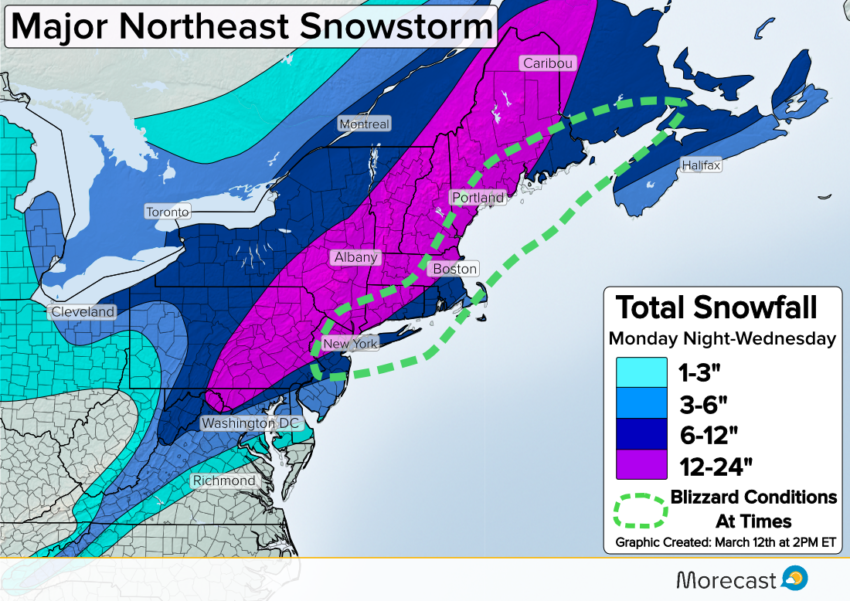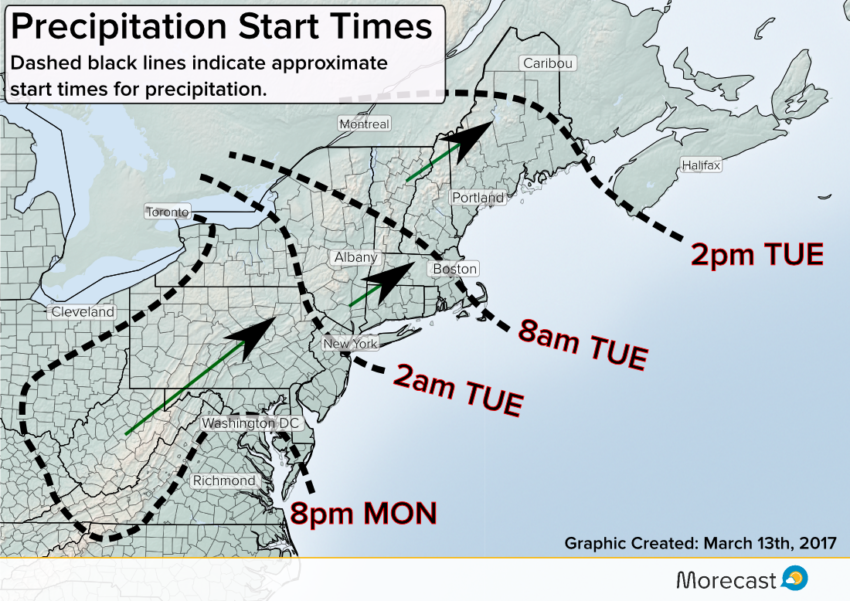Winter isn’t quite ready yet to succeed to spring for areas along the East Coast. The ingredients for a significant late-season winter storm are expected to come together from the Appalachians to New England early this week.
The Setup:
An area of low pressure will move from the Central Plains to the Ohio Valley on Monday. As this first storm moves east, it will begin to weaken and transfer its energy to a new area of low pressure off the Southeast coast. As the coastal low tracks north, conditions will be favorable for quick development of the low.
Storm Details:
A swath of snow will spread eastward across the Ohio Valley on Monday. At the same time, precipitation will develop across the Carolinas and streak northward across Virginia by Monday afternoon.
As the low off the Southeast coast strengthens Monday night, the snow in the Ohio Valley will merge with snow developing from the coastal low pressure system. Periods of heavy snow will break out across the northern Mid-Atlantic Monday night into Tuesday morning. The snow will spread northeastward to New England on Tuesday.
The video below is a model depiction of how the storm will impact the Northeast.
The heaviest snow is likely to fall just inland from the coast where 12-24 inches is expected. For the I-95 corridor from Washington to Boston, precipitation will start out as snow, but likely change to a wintry mix of sleet and perhaps rain, especially off to the southeast.
Strong winds with gusts in excess of 40 mph will accompany the precipitation near the coast. This will lead to blizzard conditions at times on Tuesday for parts of New Jersey, northward to New England. The strong winds will also help water pile up at some coastal locations leading to the likelihood of minor to moderate coastal flooding.
Check ahead for any flight information into and out of the Northeast as flight cancellations are likely.
Stay tuned to our social media feeds (Twitter and Facebook) for the latest special forecast information. Use the Morecast app to get pinpoint forecasts for your location!

